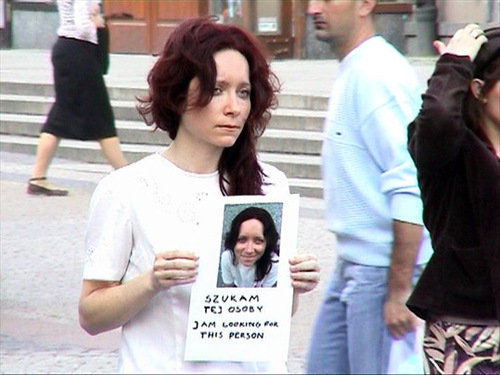The sculpture speaks: power and freedom
dal 23/8/2007 al 6/10/2007
Segnalato da
Anssi Kasitonni
Little Warssaw
Angelika Fojtuch
Zeger Reyers
Anu Poder
Marco Laimre
Neeme Kulm
Johnson & Johnson
Juri Ojaver
Mare Mikof
Mati Karmin
Terje Ojaver
Paul Rodgers
Kirke Kangro
Ekke Vali
Tiiu Kirsipuu
Mari-Liis Tammi
Jass Kaselaan
Hannes Starkopf
Margus Kadarik
Vergo Vernik
Kirke Kangro
Mari-Liis Tammi
Elin Kard
23/8/2007
The sculpture speaks: power and freedom
Tallinn Art Hall Gallery, Tallinn
Group show

Curators: Kirke Kangro, Mari-Liis Tammi, Elin Kard
Artists: Anssi Kasitonni (Finland), Little Warssaw (Hungary), Angelika Fojtuch (Poland), Zeger Reyers (Holland), Anu Põder, Marco Laimre, Neeme Külm, Johnson & Johnson, Jüri Ojaver, Mare Mikof, Mati Karmin, Terje Ojaver, Paul Rodgers, Kirke Kangro, Ekke Väli, Tiiu Kirsipuu, Mari-Liis Tammi, Jass Kaselaan, Hannes Starkopf, Margus Kadarik, Vergo Vernik (Estonia)
Do power and politics play with art, or does art play with politics and power? Over the centuries, the sculpture has probably been talking about power more often and more clearly than any other genre of the visual arts. The sculpture has always been closely connected to the perpetuation of the dominating values, i.e, the values of the dominating ideologies, and thus to the manifestations of power. The larger (the more "powerful") the dimensions of a sculpture, the more probable that it represents a manifestation of power: those going against the current would hardly have the means or time to cast their ideas into magnificent sculptural complexes. The pathos of the works commissioned by power is frightening, but the ideological horror does not necessarily exclude artistic credibility or certain beauty. And it's power (in disguise of the "will of people") that erects monuments to freedom. "Power" includes the possibility of making the other one behave as we want, and this imposition of our will must be generally accepted - either through violence, threats, or a peaceful agreement. The power is always trying to legitimate itself, and one way of announcing its legitimacy and legal force is the work of art. The power gives the artist a possibility to realise itself in monumental dimensions, and limits his/her freedom at the same time. On the formal level the freedom may often remain rather intact, but as art would ideally embody a constant movement towards freedom, change, and new possibilities, a too tight contact with political power would distort or maim it in one way or another. How free can a sculpture or the sculpture as a genre be? Can the specific features of a genre put to it certain material/formal limits? What kind of power influences the artist of today the most? Is it the market, the cultural industry, (political) ideologies or the "high art" as an institution? Should the sculpture necessarily carry a social message, involve social/political responsibility and conscience? Or should it not limit its freedom with any obligatory moral/political/social issues? Are the days of a politically commissioned sculture past?
Performance Festival in Karlskrona - Sweden
http://www.portperformance.net
Angelika Fojtuch / performance & video presentation
PERFORMANCE I AM LOOKING FOR THIS PERSON
Public Space, the city-centre of Karlskrona, 25 of August 2007, at 2 pm
curator: Torun Ekstrand / Pep-talk is all you need
Image: Angelika Fojtuch, Szukam tej osoby
Opening: 24 of August, at 6 pm
Tallinn Art Hall Gallery
Vabaduse Square 6
10146 Tallinn Estonia



